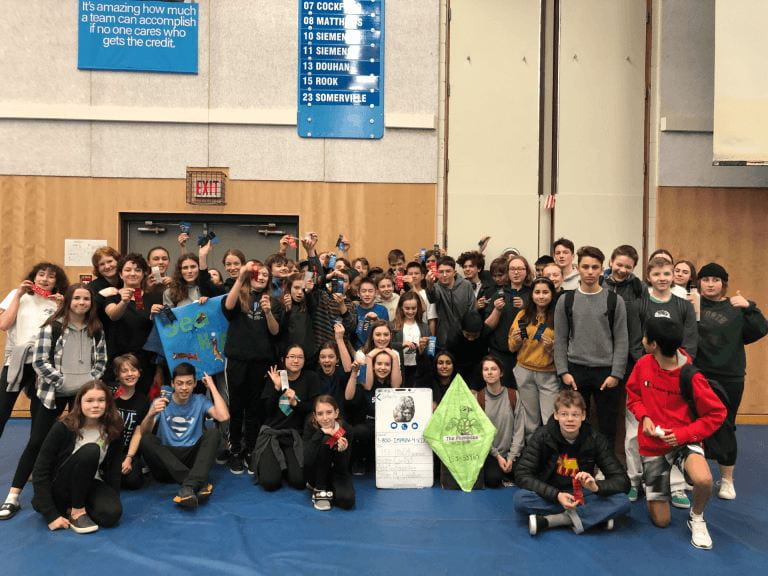“Have a Nice Life” – DI Regionals
Welcome back to another destination imagination blog post! Yes, its that time of the year again. For the past couple of months, we’ve been working hard to solve this year’s DI challenges. My group (the Kabobz) chose the fine arts challenge.
This year’s fine arts challenge is called Game On. For this challenge, we had to create and present a story that integrates the research of a team-selected game. Our team chose, the game of life. We also needed to create a game gizmo that caused an action or event to occur. For this, we created a hat with a spinning top, designed to look like the spinner used in the game. At the beginning of the performance, everything we used in the solution of the challenge needed to be held in a container that then goes through a transformation and of course just as the years before, we needed to have two team choice elements.
This year’s DI challenges were extra difficult and they were by far the most challenging ones I’ve ever faced. My group, The Kabobz, included Kai, Lucas, Adlih, Marshall, and Luca. I was a little nervous to work with them because I knew they were all really close friends but they turned out to be a nice group to work with.
To come up with our solution we used a lot of different brainstorming techniques. We started by writing down any minor or major ideas we had on pieces of paper and then we grouped and sorted them. Our team came up with the idea to use the game of life as our game. We chose the 2007 edition of the game.
For the story, we decided to write about two kids who get sucked into the game of life (Jumanji style) and are forced to play out an idealistic life the Banker (game master) wants them too. The moral of our story is that being the richest by the end of the game (retirement) doesn’t make you a winner, it’s being happy that does.

The creation of the props, game gizmo and container was divided between the group. I created the container and Adlih helped me paint it. Luca built our game gizmo and it turned out really good. Hats off to Luca for that one (pun intended).
I lost all my process photos and I’m very sad about that.
Team choice elements have always been the most difficult part of a challenge for me. I must admit that these have always been the downfall of my performances. I don’t like that they are called “team choice elements” because it always ends up being “one person in the group’s strength element”. Our team choice elements for this challenge were pretty weak. Lucas made music for the performance, which was fantastic, but on show day you couldn’t hear it. Our second team choice element was just a stick, to say the most actually… It was bad. We have already started making improvements to these parts of our challenge and they will be much better for the provincial tournament.

After we had performed our solution my group felt like it had gone really well. It seemed to have gone better then we felt it would before. However, when we got our scores it wasn’t as good as we thought. It wasn’t the worst but it really wasn’t great. They gave us zero on one of our team choice elements, which was fair but at the same time, we should have gotten at least some points for having it.
Looking back on the whole thing (the tournament and the process) there are many things we need to improve. I’m very confident we will come up with better team choice elements for the next tournament. This is our last year of DI and I indent to go out with a bang.
As always, thanks for checking in, I’m still in school.
Jessie














